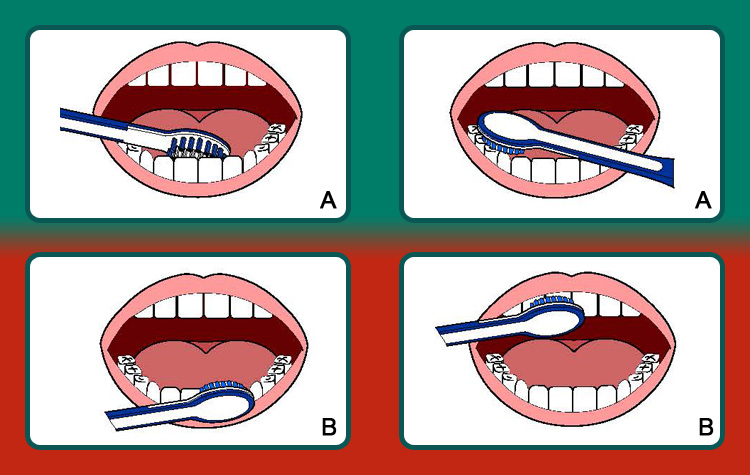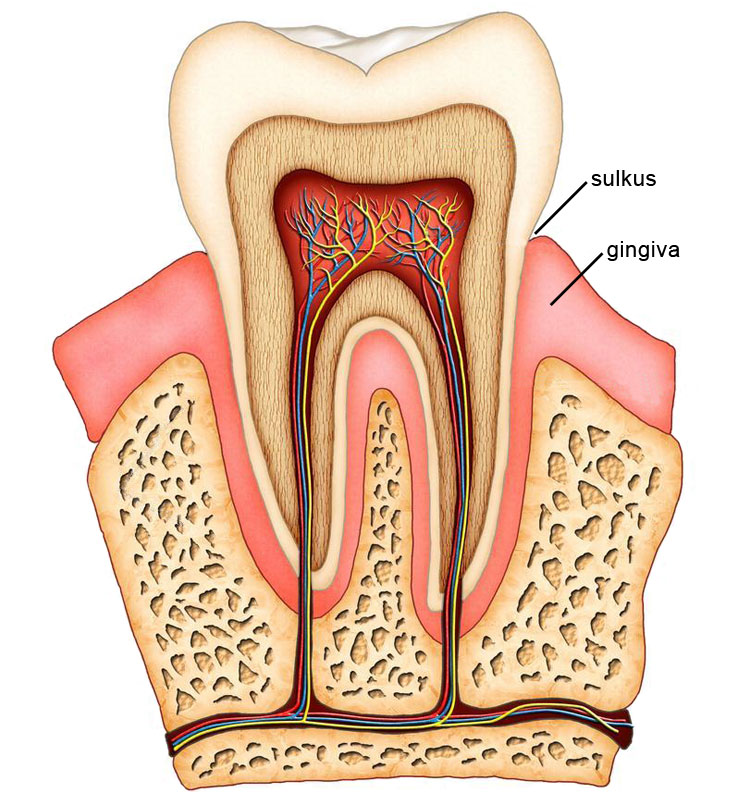Oral hygiene

Healthy teeth are visible exhibit of health and beauty. In every spoken word or reaction, the teeth are exposed to critical view of the interlocutors. Any damage or loss of teeth causes a number of consequences: disturbances in eating, speaking, mental disorders, cosmetic faults … For these reasons it is essential that everyone help themselves and protect their teeth, because the fate of the teeth is in the hands of “their owners”!
The first and most important step in the fight to protect the teeth is good oral hygiene! Primary place on this scale takes up brushing teeth with a toothbrush. In order to achieve good results it is necessary to satisfy four conditions:
- To use a good toothbrush;
- To apply the correct technique;
- To wash your teeth often enough;
- To wash your teeth long enough.
1. The toothbrushes can be found on the market in three hardness: hard, medium and soft. Preference is given to soft brushes, possibly medium hardness. Brush head (the part where there are fibers) should not be too large, should be adapted to the age and the average fiber long of 1cm.
2. Washing techniques people often neglect and do not give it a big importance. There lies a major problem, because improper technique can cause more harm than good. Of the many techniques of washing, two methods are pointed out as a simple and effective: BASS and STILLMAN techniques.
BASS (vibratory): In this technique, the brush head is placed parallel to the dental arch, at an angle of about 45 °. Part of the fibers of the brush lies on the gingiva, part on the tooth, and part between the tooth and gingiva (sulcus). Brushing teeth begins with the brush gently pressed to the teeth, or to the gingiva, so that the fibers penetrate between two adjacent teeth and in the sulcus. Then perform a slight (few millimeters) vibration, back and forth (picture A). It is important that the brush does not separate from the teeth! Washing is systematically done in the area of 3-4 teeth but it should make 15-20 vibration for each region. In this way you clean the inside and outside surfaces of the teeth of the upper and lower jaw. The position of the brush is the same everywhere except at the lower front teeth where a toothbrush, because of the shape of the lower jaw, is set upright, while in other regions is placed horizontally. The washing technique is the same everywhere. The most common mistake is that the fibers are placed only on the gingiva or tooth, and not in the sulcus and movements which are made of a few cm or horizontal washing the whole jaw from one movement!!
STILLMAN (sliding): In this technique the brush is set the same as in the previous: parallel to the dental arch, at an angle of about 45º… Washing is done by withdrawing the brush toward the chewing surface of the tooth, means downward into the upper jaw and upward in lower jaw (pcture B). Even with this technique it is necessary to make 15-20 movements for each region of 3-4 teeth.
3. The ideal would be to wash your teeth after every meal. It is often not possible. Minimum brushing your teeth 2 times a day, a perfect compromise is 3 times a day. The most important brushing is in the evening, before bedtime or after the last meal!!! The lowest activity of teeth is at that time, and the strongest action of microorganisms that cause caries!
4. Whether it will completely remove harmful substances from teeth, depends of the length of washing. Required length of tooth brushing is different for each individual. It depends on the number of teeth, schedule … Average time using the described technique is 3-4min.
What is important is that caries does not depend primarily on the type of food you are taking (chocolates, sweets …) it depends on the frequencies of the intake of food. In fact, after taking any food or drink (except plain water) part still remains on the teeth, a thin, invisible layer. The body takes 40-60min just to stop the harmful effects of “invisible” food, and much longer to “repair the damage”! Between meals you should not “nibble”, so that the body has time to “repair” the teeth. Of course, foods that are high in carbohydrates, such as chocolates and other sweets, bad influence on the formation of cavities, but it is well known. An easy way to help our teeth when we are not able to wash them, is to be vigorously washed 4-5 times with water after meals, or use chewing sugarless gum (orbit, stimorol …) after meals. This should not be abused and used as the sole method of oral hygiene, but only as a “first aid“! Toothbrush can not replace anything!
From other aids you should use dental floss and mouthwash. In the market you can find a lot of liquid solutions for washing the teeth, such as LISTERINE, CURASEPT, COLGATE…
Dental floss is used to clean between the teeth surfaces. In this way we clean the surface of the teeth that can not be washed with a brush. The thread is squeezed between two teeth and cleans the surface of a tooth with a 2-3 motion, and so on.
Regular check-ups are what is unavoidable, and what are poorly paid attention to!!! They shall be in the interval from 4 to 6 months. Then, your doctor may advise you, draw attention, answer to all your questions and finally, to make intervention, which will be easier, less painful and less expensive than if the visit to the doctor is after 2 years.
